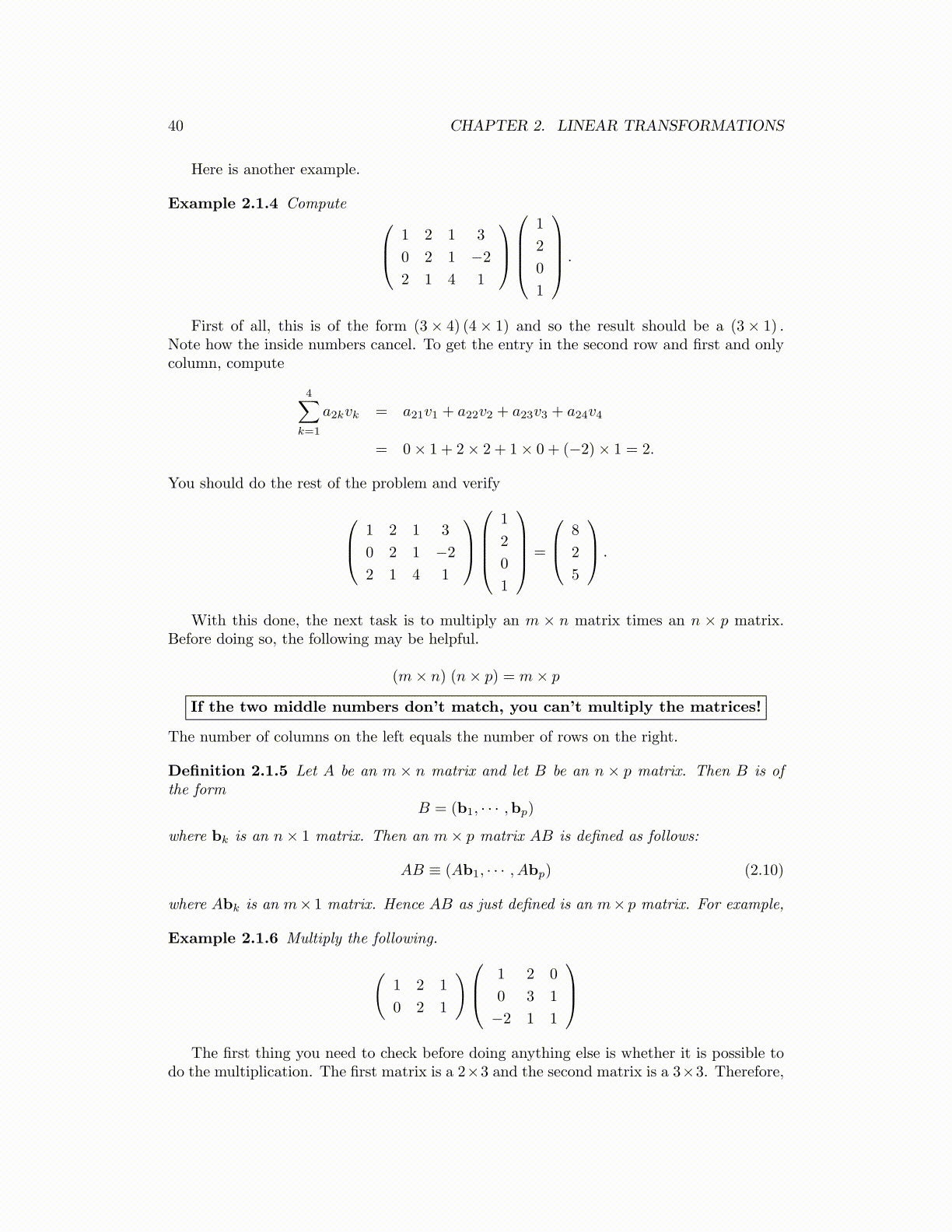
40 CHAPTER 2. LINEAR TRANSFORMATIONS
Here is another example.
Example 2.1.4 Compute 1 2 1 3
0 2 1 −2
2 1 4 1
1
2
0
1
.
First of all, this is of the form (3× 4) (4× 1) and so the result should be a (3× 1) .Note how the inside numbers cancel. To get the entry in the second row and first and onlycolumn, compute
4∑k=1
a2kvk = a21v1 + a22v2 + a23v3 + a24v4
= 0× 1 + 2× 2 + 1× 0 + (−2)× 1 = 2.
You should do the rest of the problem and verify
1 2 1 3
0 2 1 −2
2 1 4 1
1
2
0
1
=
8
2
5
.
With this done, the next task is to multiply an m × n matrix times an n × p matrix.Before doing so, the following may be helpful.
(m× n) (n× p) = m× p
If the two middle numbers don’t match, you can’t multiply the matrices!
The number of columns on the left equals the number of rows on the right.
Definition 2.1.5 Let A be an m × n matrix and let B be an n × p matrix. Then B is ofthe form
B = (b1, · · · ,bp)
where bk is an n× 1 matrix. Then an m× p matrix AB is defined as follows:
AB ≡ (Ab1, · · · , Abp) (2.10)
where Abk is an m× 1 matrix. Hence AB as just defined is an m× p matrix. For example,
Example 2.1.6 Multiply the following.
(1 2 1
0 2 1
) 1 2 0
0 3 1
−2 1 1
The first thing you need to check before doing anything else is whether it is possible to
do the multiplication. The first matrix is a 2×3 and the second matrix is a 3×3. Therefore,